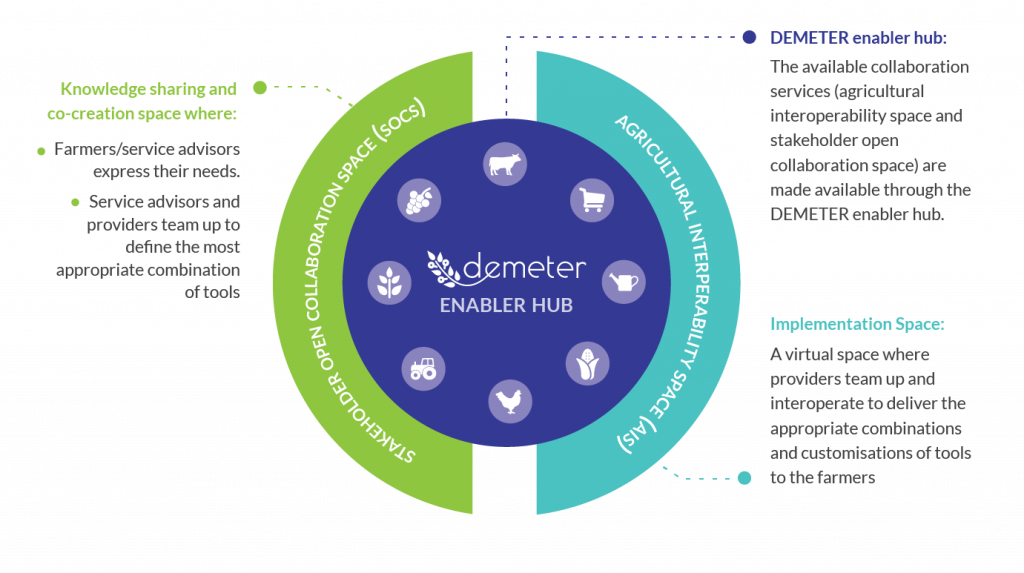
We had significant developments on the technical front during the first year of DEMETER. After developing the overall DEMETER reference architecture, the first version of the DEMETER integration platform and tools has now been released. Its main components are: the Stakeholder Open Collaboration Space (SOCS), where farmers, experts and other stakeholders come together to collaborate and share knowledge; the DEMETER Enabler Hub (DEH), where users can browse and get access to DEMETER resources; the Agriculture Interoperability Space (AIS), where developers can integrate and deploy their DEMETER-enabled applications; and, a number of what we call DEMETER-Enhanced Entities (DEEs), which are external or partner-provided entities (things, applications, platforms, services) wrapped to offer common APIs and use common data models. The latter are specified by the Agriculture Information Model, which offers a metadata model and a number of ontologies composing a common semantic data model.
We tried to take into account prior work, like research from previous projects (e.g. DataBio and IOF2020) and existing solutions (e.g. FMS and IoT platforms). We also tried to respect the different business models of the ecosystem stakeholders. Although a thorough business analysis is still under way in DEMETER, our technology implementation approach is to provide concrete assets that are usable but at the same time to allow flexibility enabling a number of business models.
To achieve this, we take a number of measures. Firstly, the runtime brokerage service environment, a microservices-based framework which is part of AIS and is required to deploy DEMETER-enabled applications, can be used either at the DEMETER cloud or downloaded and installed locally by the user. This enables the user to select to isolate their IPR and to not depend on external resources.
Secondly, we differentiate between reference and pilot/user implementations. DEMETER provides reference implementations which pilots and other users are free to extend and adapt. If some of these extensions are valuable, they can be incorporated in the next version of the reference implementation. This open-source-like approach aims to avoid vendor lock-in and alienation of stakeholder groups.
Thirdly, we run an open process of evaluating user needs, engaging not just our large number of pilots and technology experts but also the external ecosystem through a multi-actor approach. At the same time, we focus on interoperability while prioritizing open standards.
In terms of schedule, the first version of the DEMETER integration platform and tools have been presented to the DEMETER pilots, to be used and evaluated by them. Based on their feedback and on continuous development by the technology partners, a second version will be developed in mid-2021.


